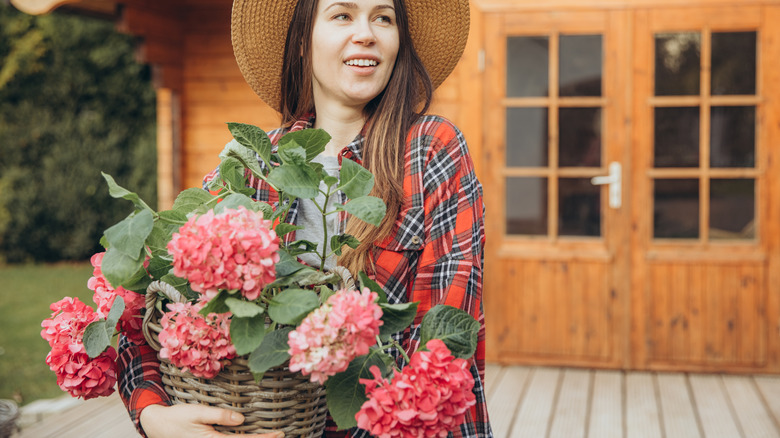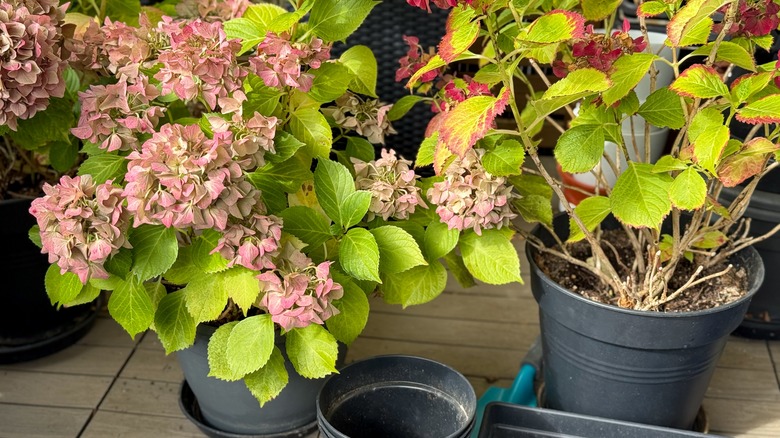What Potted Hydrangeas Need Most Before The Winter's First Frost
After a summer enjoying their gorgeous blooms on the patio, fall's the perfect time to think about how to care for your potted hydrangeas in winter. Give them a little TLC before the first frost to ensure that they come back even stronger next spring. Whether it's needing regular watering, a frost cover, or even a trip inside the garage, your potted hydrangea will need some special care to survive the cold.
While most hydrangea varieties do fine in USDA Plant Hardiness Zones 3 through 9, potted hydrangeas lack the same insulation for their roots as those planted in the ground. Pots are more exposed to the bitter cold in the air, so it's recommended to move your containers inside a garage when temperatures drop. They get the bonus of being protected from frosts as well. However, you don't want to put them indoors next to the furnace, where it's a cozy 70 degrees, because then you might rob the plant of its dormant period.
Hydrangeas need some downtime before they gear up to bloom again. It's one of many crucial steps needed if you want to see hydrangeas thrive in the spring. Even when they go dormant, hydrangeas need regular watering, so you want the soil to feel moist to the touch rather than dry. Just be sure to water when it's above 32 degrees since water doesn't tend to seep into frozen soil well. Making sure potted plants have enough water this fall will also help them weather winters a bit better.
Consider covering hydrangeas before the first big frost
Sometimes moving your potted plants inside isn't an option, though. If your pots are too large to even consider lifting, or you live in an apartment and don't have a garage to store hydrangeas in over winter, fear not. You can keep pots on the patio as long as you take a few extra precautions before the weather turns too cold.
When it comes to hydrangeas and frost, some varieties are hardier than others. Bigleaf hydrangeas are especially vulnerable to dropping temperatures and bone-chilling wind. Since they bloom on old wood, buds need to be protected throughout the coldest months. So when the forecast tells you the polar vortex is on the way, it's a good idea to gently wrap the plant in burlap for warmth. You can even use a fleece blanket around the pots to make an extra layer of protection for their roots, which are also in danger during cold snaps. Mulching can help as well. Even scooting plants to a covered area or grouping pots together, away from the wind but still open to sunlight, is another way to keep roots warm.
While you're prepping for winter, consider whether or not it is time to repot your hydrangea. If you see signs that the plant growth has slowed or it's simply getting too large for its container, it may be time to move the shrub into the ground or a larger pot. The dormancy period (but when the ground isn't frozen) is the perfect time to transplant, since it causes the plant less stress than the active growing season.

